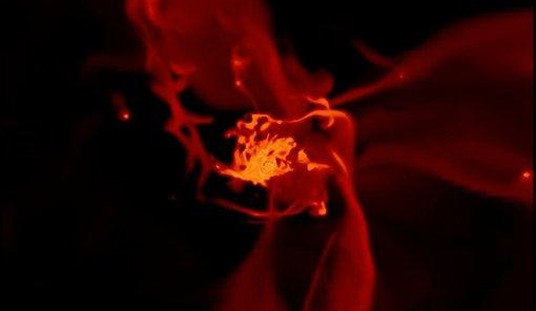[jwplayer player=”1″ mediaid=”76776″]
Last week, Psycho was playing at the Santana Row Cinemark theater, and it was certainly fun seeing that landmark film again on the big screen. (I think I had seen it years ago at the beautiful old Stanford revival theater in Palo Alto, and I’ve owned it on VHS, laser disc, DVD, and Blu-Ray. I’m sure it will be part of the core collection of films I replace when Hollywood goes to the holographic or brain-implant distribution method.) Afterwards, I remembered that I hadn’t seen the 2012 Anthony Hopkins, Helen Mirren biopic of Hitchcock and his wife Alma shooting Psycho, and decided to rent it from Netflix on Blu-Ray, and finally watched it last night for Halloween.
Let’s just say, if you know a bit about Hitchcock’s history, this is one heavily dramatized bio-drama. It did get certain facts right: There was indeed a film made in 1960 called Psycho, directed by Alfred Hitchcock. Classy Paramount Pictures was indeed rather skittish about funding a film based on what was considered a pulpy downmarket murder mystery by then-unknown writer Robert Bloch. Alma played an important role in keeping Hitch grounded during the production, reviewed the final cut, and spotted a key gaffe that went right past Hitchcock and his veteran editor, George Tomasini, who worked with Hitch during his golden period from Rear Window to Marnie, when he passed away shortly afterward. They hadn’t noticed in the editing room that Janet Leigh breathed during the long pullout shot where she’s slumped over in the tub at the end of Psycho’s infamous shower scene, and Alma saved the day.
Other than that…
In the Hopkins film, Tomasini is nowhere to be found; the film depicts Hitch and Alma cutting the film together alone, one of many howlers Hitchcock obsessives will immediately notice. This NPR interview with Patrick McGilligan, the author of Alfred Hitchcock: A Life in Darkness and Light, explores some of the other enormous stretches of dramatic license Hitchcock took:
On whether Hitchcock actually took out a mortgage on his Hollywood house to finance the making of Psycho
“No. That’s very silly. If you can take out a mortgage on your house and make a movie in Hollywood — then or now, no director did who was under studio contract. He had two houses, he had vast savings, so that aspect of the movie where he’s — where they’re constantly worrying about money to the point of talking about, you know, saving on groceries, is foolish.”
On Hitchcock’s relationship with his wife, Alma, which is portrayed in the film as a creative partnership strained by jealousy
“It’s not true that they had strife in their marriage. In fact, I always say it’s one of the few happy marriages I know of in Hollywood that lasted for 50-plus years. And they were creative partners, although the film goes way overboard to depict Alma as the person who bails Hitchcock out of every crisis that he’s supposedly undergoing.”
On the scene in Hitchcock when Alma takes over directing part of Psycho when her husband is ill
“Emails went around the world astonished at this plot turn, that Alma would go to the studios and direct what is described as a very important shot while Hitchcock is home in bed with a kind of self-induced illness because he’s so unhappy over the way things are going in his private life. Complete fiction. And when I say something’s foolish, I want to stipulate that I find the film to be a very creative and clever fiction, and one that you can certainly believe, partly because Hitchcock is such a legend and people would rather believe the legend.”
Certainly, Hopkins is just as hypnotic to watch as Hitchcock, both because he nails Hitchcock’s undertaker-like mannerisms without becoming a Rich Little-style cartoon impersonation, and because you can’t stop looking at the incredible prosthetics his face is buried underneath, and wondering: where does the makeup end and how much of Hopkins’ actual skin is visible? (These London Daily Mail photos of Hopkins having his makeup applied during a daily 90-minute process answer the question: not much at all, other than his mouth and eyes.)
And Helen Mirren as Alma is a reminder of what Warren Beatty replied to critics who argued that he and sexy Faye Dunaway looked nothing like the real-life Bonnie and Clyde: They pictured themselves looking like glamorous movie stars. Hitchcock argues that the somewhat frumpy-looking Alma Reville of 1960 thought of herself as looking like sex symbol Helen Mirren, who last month became a spokesmodel for L’Oreal at age 69. The film depicts Alma having an affair with one of Hitchcock’s writers while her husband was shooting Psycho. Did that actually happen? OnMilwaukee.com interviewed McGilligan on the topic:
The film: Alma Reville and screenwriter Whitfield Cook begin writing a script together at a secluded beach house. The two become very intimate, with the womanizing Cook attempting to lure Reville into an affair.
In reality: Fiction. “Poor Whitfield Cook,” McGilligan lamented. Cook, who wrote “Strangers on a Train” and “Stage Fright” for Hitchcock, was a long-time friend of the family and “a very estimable figure,” according to the author. It is true that Reville and Cook had a brief, “probably platonic affair” during the filming of “Stage Fright,” but that was in the late ’40s, an entire decade before “Psycho.”
Even then, Cook’s journals hint that he was unsure of taking his relationship with Alma to a sexual level; the one time the two got close to having sex, they were interrupted by a phone call from Hitchcock himself. After that moment, Cook began to distance himself romantically from Mrs. Hitchcock, and he became pretty removed from the director’s creative circle around 1952.
So yes, there is a grain of truth in Alma’s secret affair in “Hitchcock,” but its timing and the depiction of Cook (played by Danny Huston with a villainous smarm) are far from accurate. Cook was no womanizer; in fact, McGilligan notes that his journals suggest he was gay.
“When casting’s done, 90 percent of my creative work is done,” Robert Altman once said. But it would have been nice to have built an accurate script around Hitchcock’s two superstar leads.
Of course, one thing Hitchcock does get right are its eponymous subject’s maneuvers to circumvent the Hays Office, Hollywood’s self-enforced censors, who were in existence from the 1930s until the production code was replaced with the now current alphabet-based rating system in 1968, effectively marking the end of the golden era of Hollywood. How quickly did the rot set in? In 1959, Hitchcock, who loved inserting bathroom-themed in-jokes into the background of his films, had to argue hard with the censors that Janet Leigh flushing evidence down the toilet of the Bates Motel was absolutely vital to his plot to get the first on-screen toilet flush into an American movie.
Robert Altman’s M*A*S*H, shot in 1969, had the first character utter the word “f*ck” in an American movie. Forward!










Join the conversation as a VIP Member